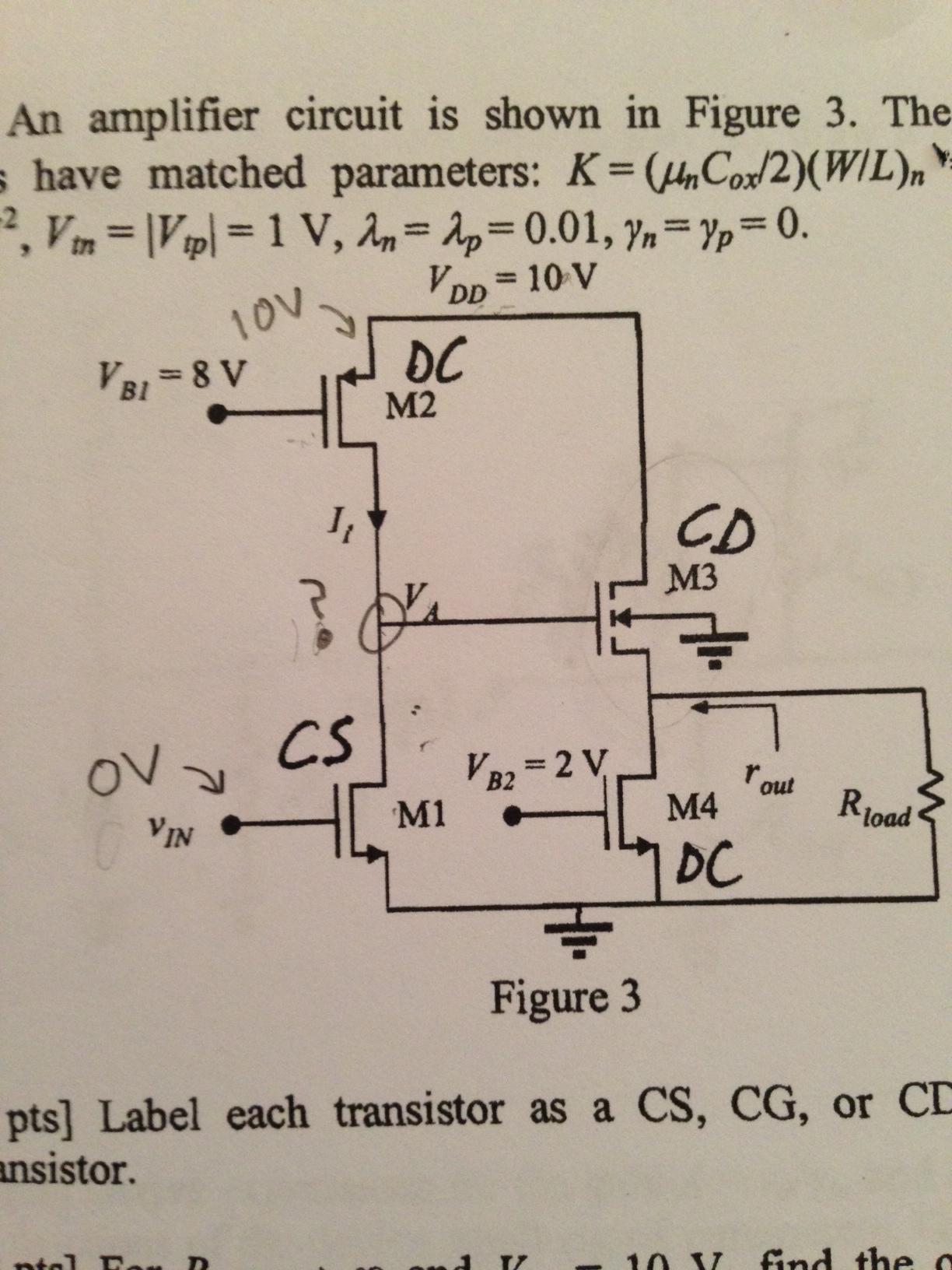This is likely a simple question that has an equally simple answer. Below is the associated schematic.

The problem I'm having is identifying what state M2 is in, and what the voltage is at Va. I know that M1 is in cutoff (Vin = 0V < 1V). I also know that M2 will either be in triode or saturation, depending on the value of the drain voltage, Va. Furthermore, there's no current going into the gate of M3. So, The drain of M2 is basically left floating.
Unfortunately, my book neglects to mention how to determine the voltage on the drain/source in such situations.
My question, then, is how do I determine the voltage of Va? Also, what's the general rule of thumb when connections are left floating?
NOTE: My thought is that Va is around 10V, being that the MOSFET is on. That is, because the MOSFET can be modeled as a wire when it's on (broadly speaking), Va is really the same as node Vdd. At least that's my thought.
Any input is appreciated. And yes, this is homework.
